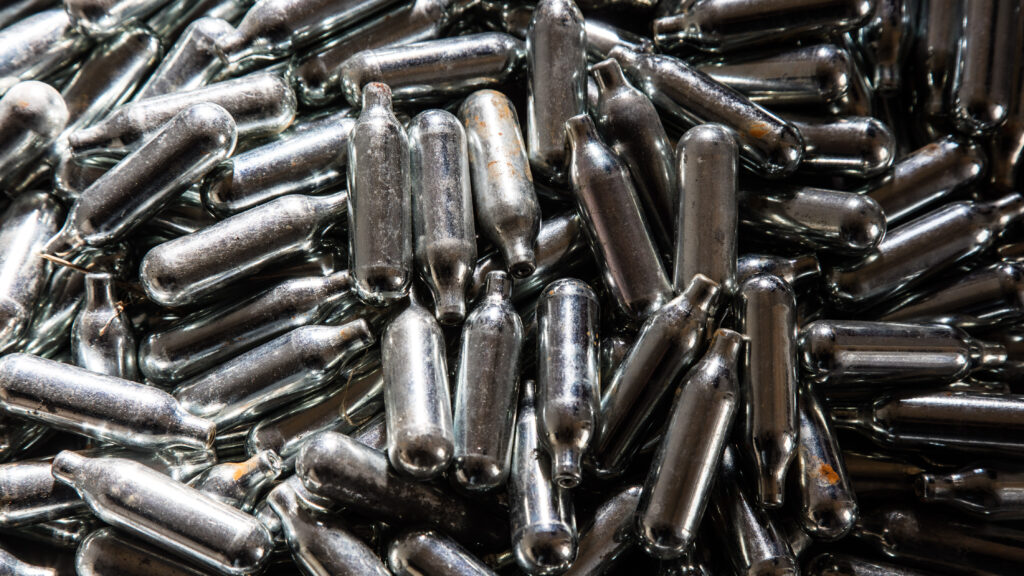Laughing gas may be most associated with its use in dentistry, but in recent years, scientists have been inching toward using the chemical for another purpose: depression that defies treatment. The results of a small trial, published Wednesday in Science Translational Medicine, suggest that a low dose of laughing gas could help improve depressive symptoms in patients with a severe form of depression that fails to respond to antidepressants.
Researchers at Washington University in St. Louis found that a low dose of nitrous oxide, also known as laughing gas, was just as effective at improving depression as a higher dose in patients with treatment-resistant depression, with less adverse side effects after two weeks. Either dose relieved symptoms more than placebo. A larger trial is planned to confirm the results.
Treatment-resistant major depression (TRMD), usually diagnosed after at least two antidepressants fail to help a patient, occurs in about one-third of patients with major depression, adding up to 17 million individuals in the U.S. The field has been plagued by a series of failures, motivating researchers to continue looking for alternatives.
advertisement
“There hasn’t been a ton of forward progress to the dismay of many people,” said Kara Zivin, a professor of psychiatry at the University of Michigan who wasn’t part of the study.
Beyond antidepressants and therapy, current strategies to treat TRMD include electroconvulsive therapy and anesthetics. One particular breakthrough, ketamine, was found to improve depression symptoms in just a few hours. But experts are looking for more, cheaper, and safer options. “You need multiple alternatives because every brain is different,” said Cristina Cusin, director of the ketamine clinic for treatment-resistant depression at Massachusetts General Hospital, who wasn’t involved in the study.
advertisement
In search of these alternatives, researchers looked to test other anesthetics, like nitrous oxide, a chemical typically used to sedate individuals undergoing medical and dental procedures.
A previous study showed that laughing gas improved depression symptoms one day after treatment. In the new study, the researchers wanted to see whether those effects were long-lasting and whether a lower dose could work as well.
To do this, they recruited 24 patients with TRMD, who were randomized in a crossover study to receive placebo, the low dose, or the high dose of laughing gas for one hour. In following sessions, each participant was again randomized to a different treatment group. Researchers then evaluated depressive symptoms of the 20 participants who completed all three sessions with a variety of questionnaires up to two weeks after each treatment.
After receiving either dose of laughing gas treatment, participants reported having less depression symptoms than those who did not. In one specific questionnaire, depression symptoms dropped between five and seven points, on a 65-point scale, with laughing gas compared to placebo two weeks after treatment. However, the high dose, 50% nitrous oxide, resulted in side effects like nausea and vomiting. The lower dose had much less frequent and less severe side effects. After the entire study was completed, depression symptoms had dropped about 11 points from their baseline levels.
“I work with these people for so many years, I don’t expect to see new things work,” said Charles Conway, professor of psychiatry at Washington University and senior author of the study. “But patients in this trial, some of whom I have known for a long time, got better.”
Laughing gas may offer certain advantages over other drugs and treatment strategies. “It’s a good option because it’s already in every hospital and every laboratory,“ said Cusin. It also has less serious side effects than ketamine and it is not metabolized in the body, added Peter Nagele, lead author of the study. “It goes into your body in a few minutes, leaves in a few minutes, and that’s it,” he said. Nagele, an anesthesiologist at the University of Chicago, has filed for a patent for use of nitrous oxide for depression.
However, experts warn that because of the way the anesthetic is typically used, there is a lack of safety data on prolonged use. “We have no idea what happens to a brain that gets exposed [to laughing gas] repeatedly over a long period of time,” said Cusin. Other experts agree that, as with other drugs that affect the brain, there is potential for abuse.
Additionally, trial participants were 96% white, raising concerns of how applicable the findings are for other populations, Lisa Harding, a psychiatrist at the Yale School of Medicine who wasn’t involved in the study, pointed out. In the researchers’ next studies, more individuals from different backgrounds need to be included to prove the efficacy of laughing gas in depression in the real world, she said.
Although the results are preliminary and more data are needed, the researchers hope this could become another tool to help treat TRMD in a fast-acting manner. “You could laugh it off a little bit,” said Zivin, who was not involved in the study. “But if it has a benefit and it doesn’t have a serious side effect, why not try to help people?”
